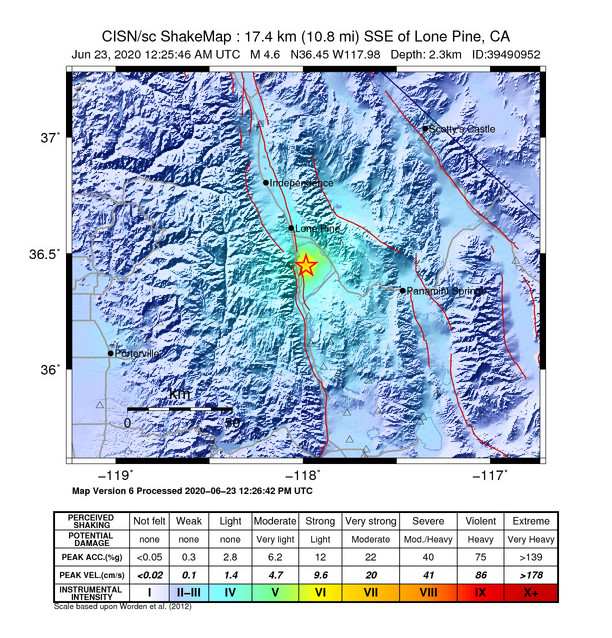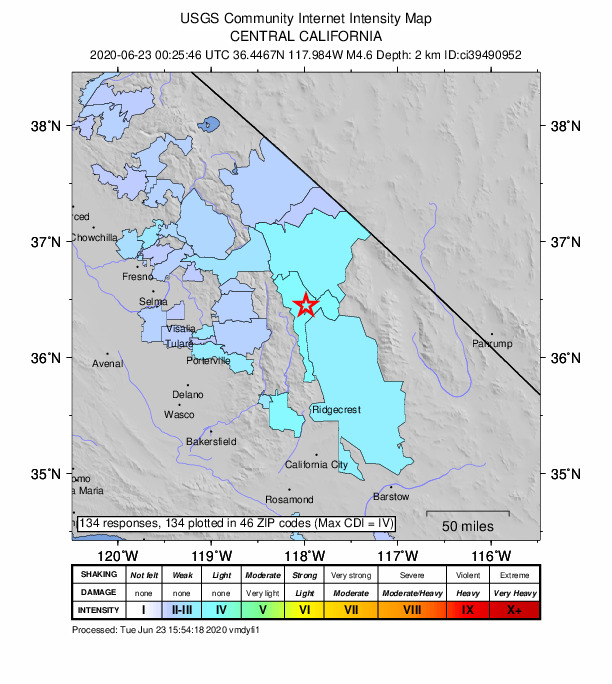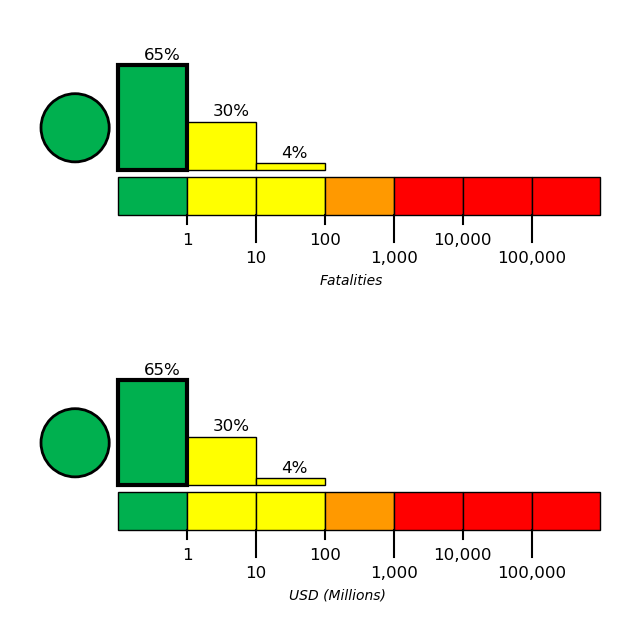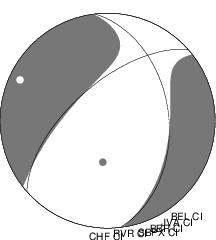Generating page for event ew1592871946...

4.62, 17km SSE of Lone Pine, CA
Disclaimer: This information is intended solely for research and should not be used for communications with the media or the public.
Table Of Contents
Mainshock Details
(top)
Information and plots in the section are taken from the USGS event page, accessed through ComCat.
| Field | Value |
|---|
| Magnitude | 4.62 (mw) |
| Time (UTC) | Tue, 23 Jun 2020 00:25:46 UTC |
| Time (UTC) | Tue, 23 Jun 2020 00:25:46 UTC |
| Location | 36.446667, -117.984 |
| Depth | 2.26 km |
| Status | reviewed |
USGS Products
(top)
Nearby Faults
(top)
2 UCERF3 fault sections are within 10km of this event's hypocenter:
- Owens Valley: 1.81km
- Sierra Nevada (No Extension): 3.07km
Sequence Details
(top)
These plots show the aftershock sequence, using data sourced from ComCat. They were last updated at 2020/06/23 17:42:02 UTC, 17.27 hours after the mainshock.
53 M≥0 earthquakes within 10 km of the mainshock's epicenter.
| First Hour | To Date |
|---|
| M 0 | 21 | 53 |
| M 1 | 21 | 53 |
| M 2 | 9 | 22 |
| M 3 | 2 | 5 |
Magnitude Vs. Time Plot
(top)
This plot shows the magnitude vs. time evolution of the sequence. The mainshock is ploted as a brown circle, foreshocks are plotted as magenta circles, and aftershocks are plotted as cyan circles.

Aftershock Locations
(top)
Map view of the aftershock sequence, plotted as cyan circles. The mainshock and foreshocks are plotted below in brown and magenta circles respectively, but may be obscured by aftershocks. Nearby UCERF3 fault traces are plotted in gray lines, and the region used to fetch aftershock data in a dashed dark gray line.
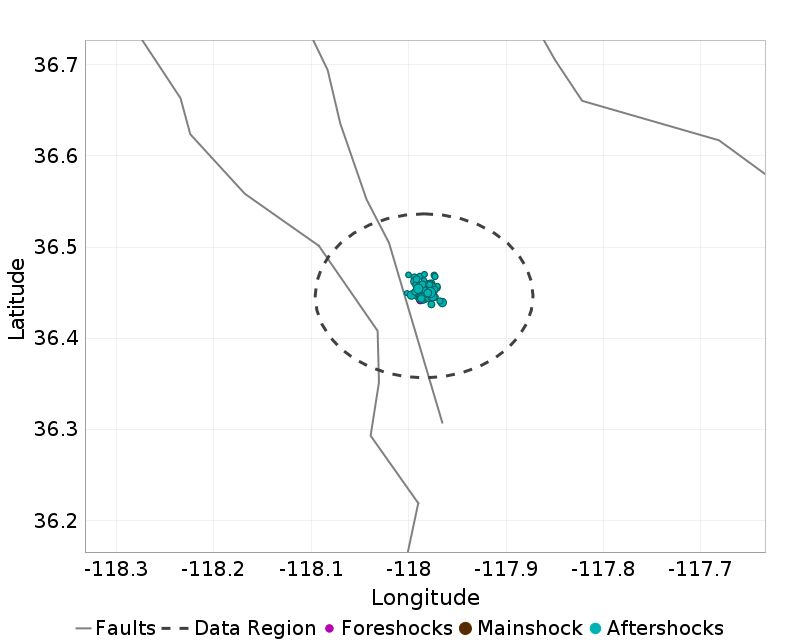
Cumulative Number Plot
(top)
This plot shows the cumulative number of M≥0 aftershocks as a function of time since the mainshock.
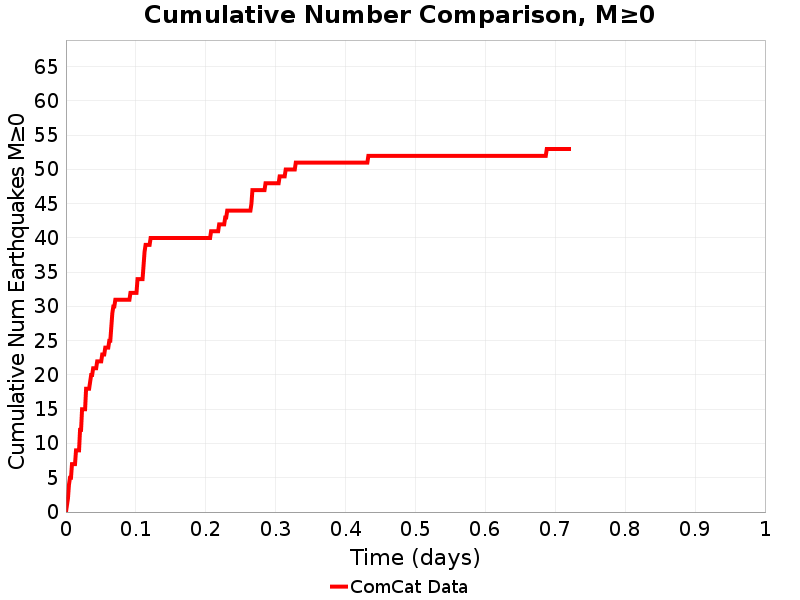
Magnitude-Number Distributions (MNDs)
(top)
These plot shows the magnitude-number distribution of the aftershock sequence thus far. The left plot gives an incremental distribution (the count in each magnitude bin), and the right plot a cumulative distribution (the count in or above each magnitude bin).
| Incremental MND | Cumulative MND |
|---|
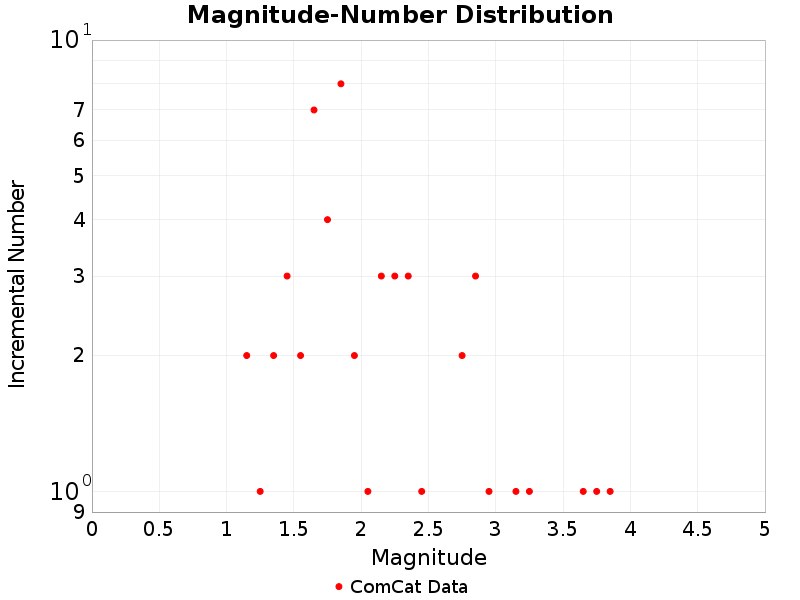 | 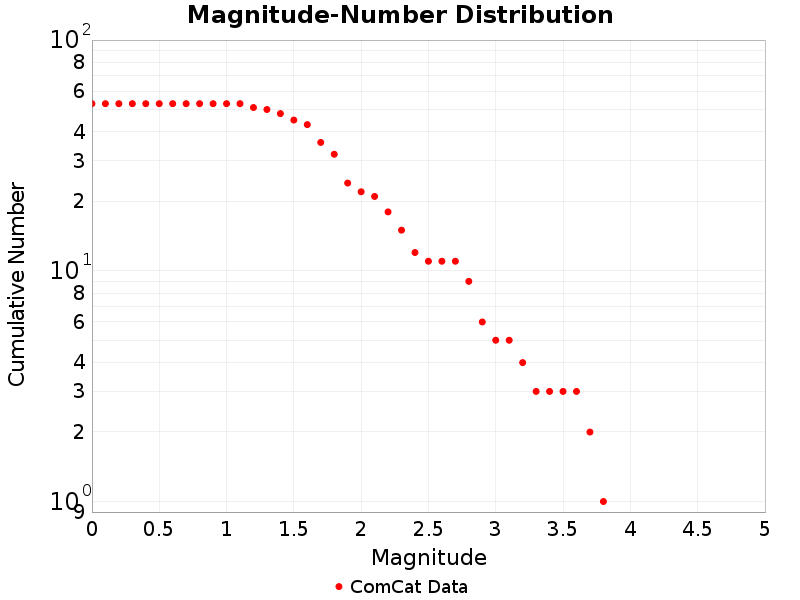 |
Pre Event Seismicity Results
(top)
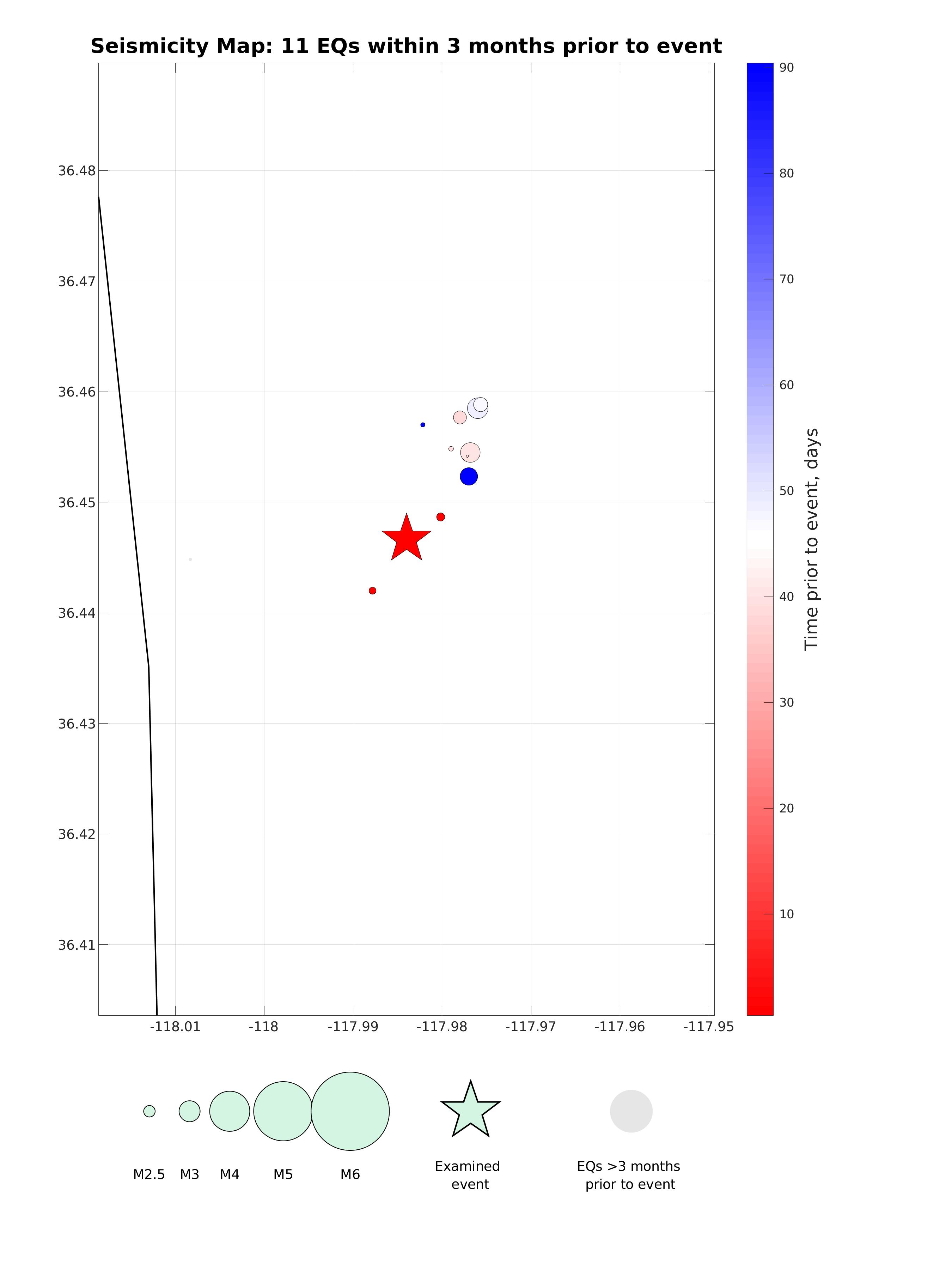
Figure 1. Seismicity Map
Map view of earthquakes (circles) with magnitude M2.0+ that occurred within 3 months and within 5 rupture lengths from the event considered (star). Circle size is proportional to magnitude (see legend) and color represents the time prior to the event considered (see colorbar).

Figure 2. Magnitude (with b-value estimation) vs. Time
Magnitude (left axis) and b-value (right axis) vs. time of earthquakes in the seismicity map prior to the event considered (star). Color represents distance to the event (see colorbar). The b-value (gray line) is estimated within a sliding window of 20 days; results are only reported for windows with >5 events. The gray dashed lines correspond to a 95% CI for the b-value. The b-value estimation and confidence intervals are according to Tinti and Mulargia (1987).
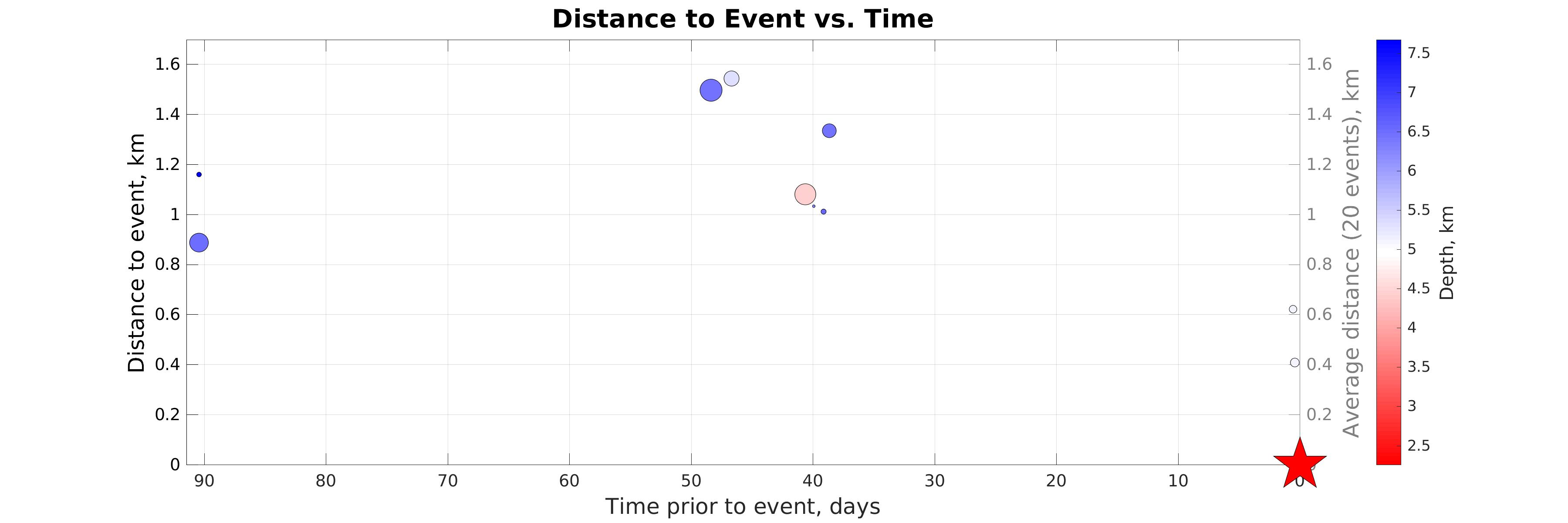
Figure 3. Distance vs. Time
Distance (left axis) vs. time of earthquakes in the seismicity map prior to the event considered (star). Color represents hypocentral depth (see colorbar). The gray line shows distance to event considered averaged within sliding time window of 20 events.
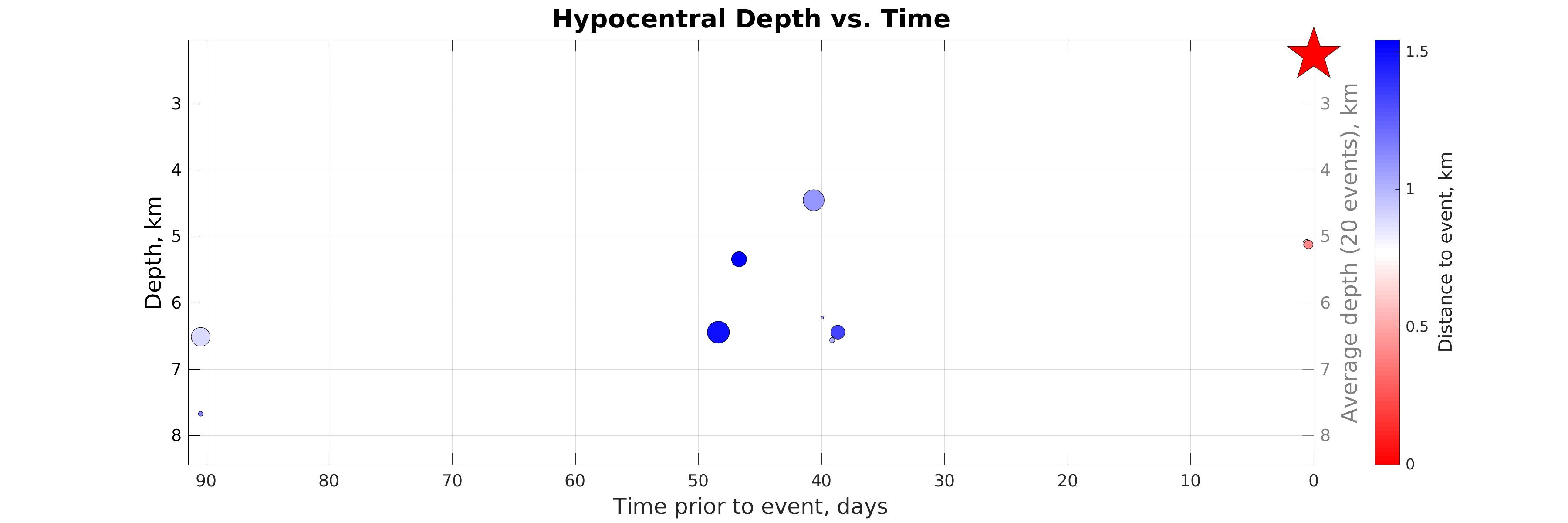
Figure 4. (Depth vs. Time)
Hypocentral depth (left axis) vs. time of earthquakes in the seismicity map prior to the event considered (star). Color represents distance to the event considered (see colorbar). The gray line shows the depth averaged within sliding time window of 20 events.
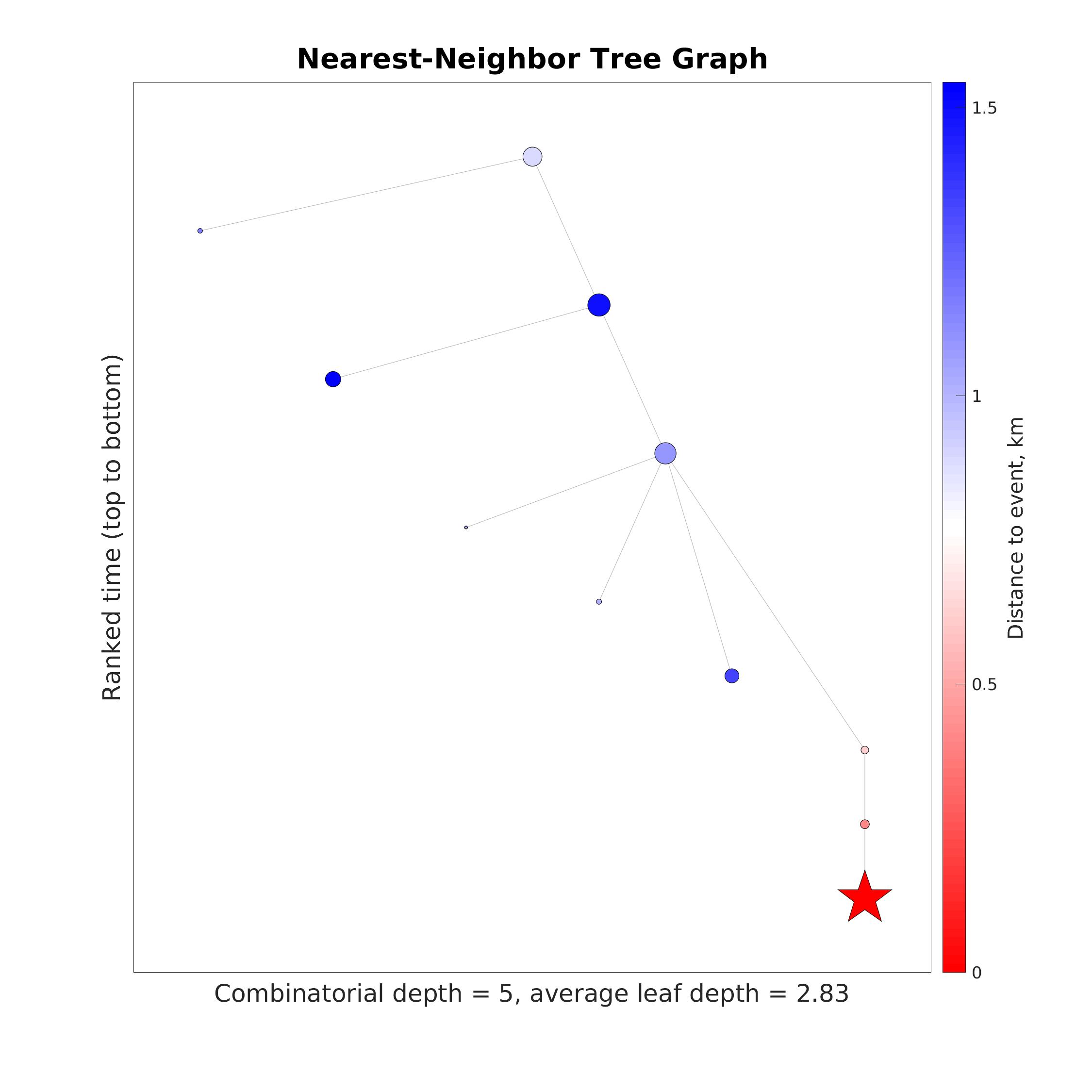
Figure 5. Nearest-Neighbor Tree Graph
Tree graph representing nearest-neighbor connections (gray lines) among the earthquakes in the seismicity map prior to the event considered (star). Y-axis represents ranked time (from top to bottom). X-coordinates of events are calculated for proper visual embedding of the tree in the plane and do not represent a physical characteristic. Color represents distance to the event considered (see colorbar). The combinatorial depth of the tree (number of generations) and the average leaf depth are marked. The results are based on the methodology of Zaliapin and Ben-Zion (2013).
